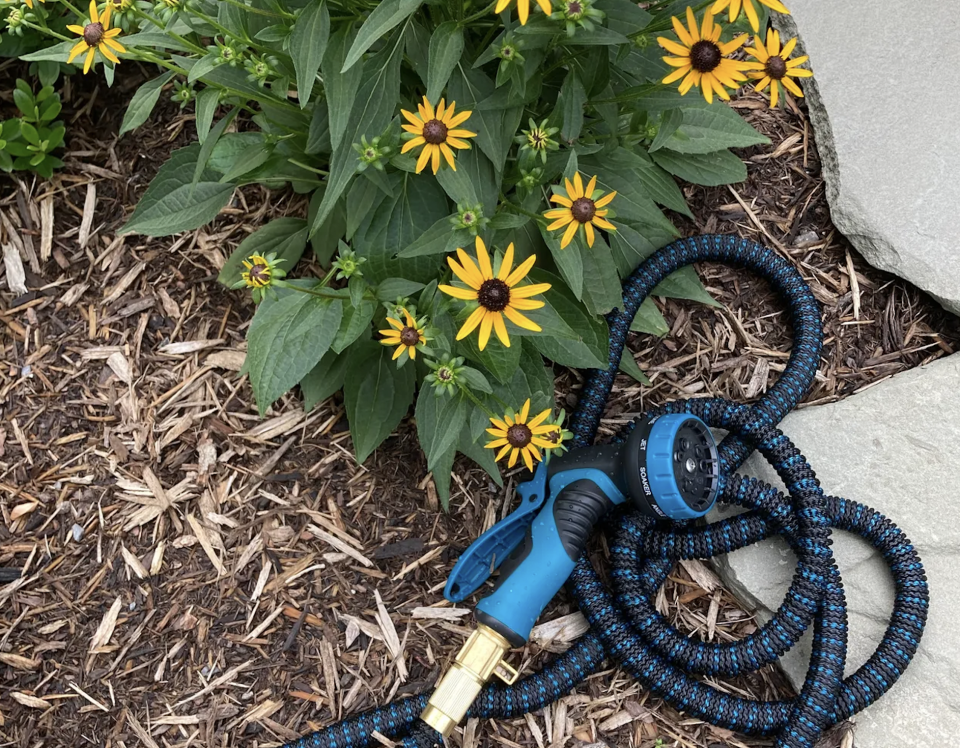Nobody likes a kink in their hose. Here's 3 tips to help you shop for the best garden hose

Gardening, done right, is supposed to be fun, satisfying and rewarding. Not that you necessarily have to relish every bug bitten ankle, holly leaf pierced finger or sweat swollen eye, but on balance it should bring you more good than bad. So it always seems to make sense to me to spend a little time figuring out how build up the good side of the equation and shrink down the bad.
On the good side there’s plenty to pick from. Whether it’s a perfectly mown lawn, artfully pruned specimen or the fact that you successfully overwintered the dwarf, weeping, variegated form of some silly plant that nobody else in your inner circle has been able to keep alive for more than lunch hour — a full garden season offers a long list for those looking to maximize the good stuff.
On the bad side there’s an equally long list. There’s frost and heat, drought and rain, pestilence and fire raining down the sky. But even with that long list there is always some low hanging fruit for the gardener looking to make gardening, and life, a little less frustrating and a bit more enjoyable.
And one of those things is the right garden hose.
You may like: You're edging the grass around your garden beds wrong. Here are 4 ways to get it right
To some people, a garden hose is a garden hose. In reality, choice of preferred garden hose, like garden spades, gardening gloves and gardening partners, can be a very, very personal thing. But there are some basics of hoses that should go into any hose buying decision. Here's what you need to know:
How to choose a kink-free garden hose

Sorry to burst your bubble right off the bat but this myth is right up there with the Tooth Fairy and Nessie of the Loch. Sure, there are plenty of hose brand names out there that make you think they’re guaranteed to never kink, but if you’ve ever used one of them, you know full well the value of those claims.
The problem with kinking is that our need for a hose that we can wind around bird baths, car tires and tree trunks means that it has to be flexible. And that means that as soon as you start to pull on that hose for that last three feet you need to reach the last pot on the terrace, doink!, the hose kinks and no matter how hard you pull it just gets worse and worse.
You may like: Woof. Why your dogwood tree looks so bad this year and 4 tips on how to treat it
Hoses kink. Get over it!
Why you should skip gimmick garden hoses

Don’t roll your eyes. We’ve all tried them. There are the inflatable hoses that are supposed to shrink up to the size of a gerbil after you turn off the water, to help save space. There are also the little coily things that seem to be designed to do nothing but get caught around chair legs, mail box posts and the neighbor’s golden retriever.
You may like: Here are 3 ways you’re killing your trees by building 'mulch volcanoes' and how to fix it
So what makes a good garden hose? Rubber! A good, heavy duty, rubber hose is best. Yes, it will occasionally kink — but not as often as most others. Yes, it is heavier than those silly designer hoses — but it will last for years.
How to find a high-quality connector for your garden hose

Nothing can ruin your day quite like walking out the door, all gussied up and on your way to a fancy dinner event, realizing one of your pots needs a drink, bending down to the faucet to twist on the water and having half the volume of Lake Meade spray you down from head to foot while your spouse, who had preferred you not waste time watering one more pot before dinner, looks on with a vindictive combination of glee and disgust.
At least that’s what I hear. No personal experience here...
Cheap fittings are just that — cheap. They are designed to facilitate a straight line water path from the faucet to the bottom of your gardening shoes and to generate maximum frustration.
A good hose also has quality fittings. The cheap plastic or soft metal fittings found on most garden hoses there days are fine if they’re stepped on by a ground hog or a small child. But when car wheels roll over those cheapies, and they will, forget it. They warp, bend and leak no matter how many pair of channel lock pliers you use to crank them down. Sorry folks but brass is king when it comes to connectors.
You may like: Are you adding the wrong amount of mulch around your trees and in your garden beds?
And lastly, there’s those pesky O rings — you know, the things that fall out of the end of the hose — those little bits you tend to ignore. Well I’m here to tell you, those O rings are serious business. Without one in the middle of each connection, you’ll be forever getting sprayed in the face when you turn on the hose.
So go out and buy a nice big bag of rubber (not hard plastic!) O rings for when the next one falls down the storm drain.
Then go in and change your clothes for dinner!
Paul Cappiello is the executive director at Yew Dell Botanical Gardens, 6220 Old Lagrange Road, yewdellgardens.org.
This article originally appeared on Louisville Courier Journal: 3 things to know about finding the best garden hose

